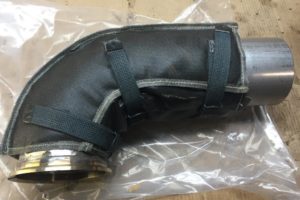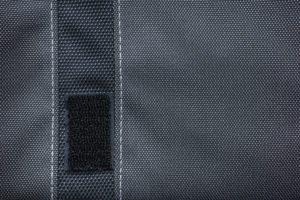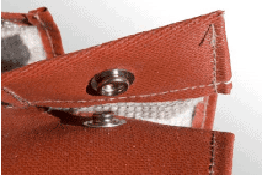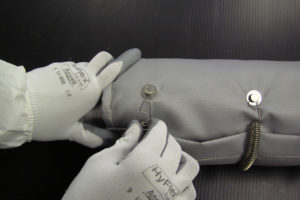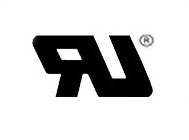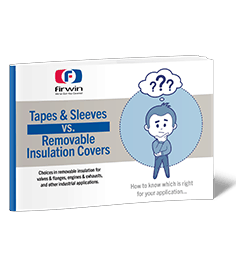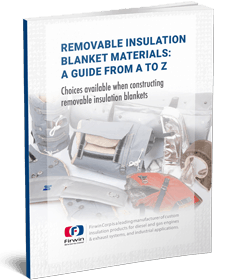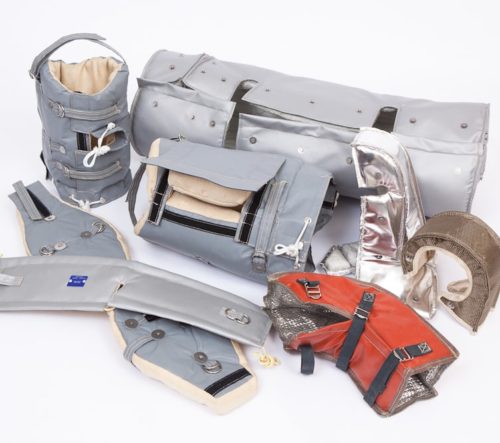 In the industrial sector, insulation is critical to the safe and continuous operation of equipment and systems. By containing the heat generated during operations, insulation increases thermal efficiency, reduces the risk of thermal damage to heat-sensitive components, protects machine operators from heat-related injuries, and provides many other advantages.
In the industrial sector, insulation is critical to the safe and continuous operation of equipment and systems. By containing the heat generated during operations, insulation increases thermal efficiency, reduces the risk of thermal damage to heat-sensitive components, protects machine operators from heat-related injuries, and provides many other advantages.
Insulation jackets typically consist of several components, which work together to provide the desired insulating performance. These components include the insulation material, the securing mechanism, a vapor barrier (for low-temperature environments), and the outer cover.
The following article is a complete insulation jacket resource: outlining what they are, what benefits they offer, and the relevant products and services available at Firwin.
What Are Insulation Jackets?
Insulation jackets serve as complete insulation systems consisting of three primary components.
- Outer protective cover: designed to shield and protect the insulation from the environment in which it finds itself.
- Insulation mat: typically 1″ thick fiberglass, which provides the actual heat containment. Thicknesses vary from ½” up to 4,” depending on the amount of heat reduction necessary.
- Inner liner: helps to keep the insulation mat in place and may also act as a barrier to protect the insulation mat from fluid leakage.
Insulation jackets can be filled with a variety of insulation materials—such as Aerogel, wool, or fiberglass—which are often layered to provide maximum heat retention.
In addition to the three components above, all insulation jackets include fastening systems to ensure the jackets fit securely and tightly around the equipment. Typical fastening methods include:
- Stainless steel lacing wire
- Straps
- Springs
- Snaps
- Velcro
Benefits of Insulation Jackets
By installing insulation jackets on their equipment and systems, industry professionals experience a number of benefits, such as:
Energy Efficient
The absence of insulation jackets in thermal systems—even those with some insulation material—increases the likelihood that heat will leak into the surrounding environment. This heat loss decreases the energy efficiency of a system as well as increases the ambient temperature of the surrounding environment. Insulation jackets prevent heat from escaping a system, which can translate to better energy efficiency for the system and comfort levels for operators.
Cost Savings
Thermal efficiency is directly related to operational costs. If heat is being lost somewhere in a system, the company is paying to compensate for that loss in the form of additional power consumption. Insulation jackets are a simple way of avoiding heat loss and, consequently, lowering energy costs. Some government efficiency programs even offer rebates to offset the cost of insulation jackets, providing additional cost savings.
Inefficient thermal management may also lead to damage to heat-sensitive components. Over time, the damage can result in premature equipment failure. Investing in preventative measures—including installing and maintaining insulation jackets—can help avoid these costly consequences.
Better Employee Safety
Industrial equipment, such as engines and exhaust systems, regularly attain high temperatures. If left unchecked, these elevated levels can cause mild to severe issues. By using insulation jackets, facility managers and owners can reduce the risk of employees suffering from burns (stemming from incidental contact with heated surfaces and hot steam), fatigue (stemming from elevated work environment temperatures), slips (stemming from increased condensation levels), and smoke inhalation (stemming from equipment fires).
Longer Equipment Life
Insulation jackets protect industrial equipment and systems from damage and degradation resulting from the following:
- Weather: The elements can severely affect system components. For example, snow and ice can add weight that stresses parts, while rain and condensation can cause corrosion. Insulation jackets can reduce (although not eliminate) environmental threats from coming into contact with sensitive system areas.
- Extreme operating temperatures: Exposure to extremely high or extremely low temperatures causes metal to expand or contract, respectively. These imperceptible changes can compromise the integrity of the material over time, resulting in premature component failure. Insulation jackets prevent this problem by absorbing and retaining heat to maintain moderate operating temperatures.
- Condensation: Pipes are prone to sweating when there is a difference between internal and ambient temperature. The resulting condensation can lead to rust, mold, electrical damage, and water damage in nearby equipment. Insulation jackets reduce the temperature differential between the equipment and its surroundings, so condensation doesn’t have the chance to form. For more information, please visit our article on the topic.
By performing the above functions, insulation jackets help extend the service life of machinery, which translates to lower long-term operating and maintenance costs.
Insulation Jackets at Firwin
At Firwin, we are an industry-leading supplier of custom insulation products for industrial facilities. Our flagship product is ourline of removable insulation jackets (also known as insulation blankets or covers). They are available in a basically unlimited range of shapes, sizes, and configurations, all of which feature a multi-layered design and secure fastening systems.
We offer an extensive selection of insulation jackets to protect a vast array of components, including:
- Engine Exhausts (Manifolds, Turbo’s, Outlet Elbows, etc. )
- Exhaust piping (flexes, silencers, catalysts, etc.)
- Valve, manway, and industrial processing covers
Our team is well-equipped to provide a customized insulation solution for any industrial system. Regardless of the component needing protection, we can shield heat-sensitive system components, lower ambient temperature levels, protect employees from heat-related injuries, and minimize heat loss for greater energy efficiency.
Materials for Firwin’s Insulation Jackets
Our insulation jackets consist of layers of insulation material carefully constructed to minimize heat loss within a system. The insulation material used depends on the needs of the equipment and the facility, such as operating temperature range, environmental protection requirements, safety and regulatory standards, physical space available, and touch temperature constraints. Some of the materials we commonly employ include:
- Aerogel: This high-performance material offers greater insulating properties than wool and fiberglass in smaller thicknesses (a 0.5-inch layer of Aerogel has equivalent insulation performance to a 1.5-inch layer of fiberglass), making it ideal for use in applications that have high insulation requirements and limited space. It is also lightweight, which makes it appropriate for use with light or fragile components.
- Fiberglass: Fiberglass is one of the most commonly used materials in insulation blankets. It is odorless, sound-absorbing, and resistant to corrosion, rot, and vermin. It has a maximum temperature limit of 1200° F (649° C).
- CMS Wool: Cellulose material solutions (CMS) wool is a compact insulation material with numerous advantageous properties. Examples include fire retardance, sound absorption, and resistance to corrosion, decay, mold, and vermin. It is safe for use in temperatures up to 2192° F (1200° C).
- Mineral Wool: Mineral wool is a broad category of materials that includes glass wool, rock wool, and slag wool, all of which offer thermal resistance up to 1200° F (649° C). They also provide resistance to moisture and some degree of sound absorption.
Installation Process for Firwin’s Insulation Jackets
Both proper selection and proper installation are critical to the performance of insulation jackets. The Firwin team has the knowledge and skills to ensure each jacket is constructed and installed correctly. Our installation process for our most common fastening system, stainless steel lacing wire, is as follows:
- Laying the jacket over the equipment to verify placement
- Creating metal wire loops which are then fed from beneath the equipment and hooked on the capstan rivet
- Tightening and wrapping the wire on the first bottom rivet
- Feeding the wire back up to the first top rivet and tightening and wrapping it back to the bottom rivet
- Tightening, tying, and snipping the wire at the bottom rivet and tucking away any excess wire
- Repeating steps 2–5 until the blanket is fully attached
An alternative installation method involves attaching the wire loop to one capstan rivet and bridging across to the next rivet.
Some tips for proper insulation jacket installation include:
- Installing overlapping blankets last
- Using flaps with wire inside to tie down the under blanket tightly
- Starting near the center of the insulation jacket to ensure the ends are even
- Crisscrossing the wiring so the blanket flaps remain over the seams
Contact Firwin for Insulation Jackets
Insulation jackets serve many critical functions in industrial facilities, such as increasing energy efficiency, prolonging the service life of systems, and protecting employees from burns. For customers looking for high-quality insulation products, Firwin is the ideal partner.
At Firwin, we offer a wide range of insulation solutions—including insulation jackets—suitable for use in industrial applications. To learn more about our insulation product offerings, contact us or request a quote today.

